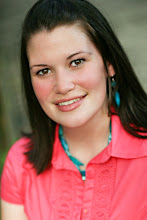First off, to "quilt" your doll quilt in the stippling method I used, you will use a Darning Foot (which is used for all free motion quilting.)
 I highly recommend taking a Beginner's Quilting class at your local quilt shop. That's what I did, and I loved it. I learned so much more than I thought there ever was to it, and not to mention had a ton of fun having a "me" day and socializing with all the other quilters there.
I highly recommend taking a Beginner's Quilting class at your local quilt shop. That's what I did, and I loved it. I learned so much more than I thought there ever was to it, and not to mention had a ton of fun having a "me" day and socializing with all the other quilters there.The key to learning how to quilt is practice, practice, practice. In the class I took, we prepared a quilt sandwich that was 24"x24" out of scrap batting and two inexpensive pieces of muslin. I think this is a really great way to learn and practice, so I encourage all of you interested in learning to try this out.
 Start out by using your walking foot (more on the walking foot to come) to sew straight lines down the center of each side, dividing the 24" square into four 12" sections. Using a walking foot I'd say is the easiest way to quilt, so in class that's what we started with.
Start out by using your walking foot (more on the walking foot to come) to sew straight lines down the center of each side, dividing the 24" square into four 12" sections. Using a walking foot I'd say is the easiest way to quilt, so in class that's what we started with.To do a grid pattern, use your quilting ruler and fabric marker to draw one line on the fabric to follow while sewing. Sew you first line directly on your marker line. Next just move over however far apart you want your spacing to be (mine is 1" here) and using your first sewn line as a guide, simply stitch the next row. Then just keep going, using the last row sewn as a guide for the next.
 I know what you're thinking. You dont have to be perfect for this to turn out well. In fact, it hides mistakes very well. In the picture you can easily pick out my mistakes, but I promise, in real life they are totally hidden. Not to mention that fact that it helps to use matching thread (instead of dark blue thread on white cloth like I did! But you can definitely see it.)
I know what you're thinking. You dont have to be perfect for this to turn out well. In fact, it hides mistakes very well. In the picture you can easily pick out my mistakes, but I promise, in real life they are totally hidden. Not to mention that fact that it helps to use matching thread (instead of dark blue thread on white cloth like I did! But you can definitely see it.)Next up is one of my favorites. Im not sure of the name but it's really fun and super easy. It's all just eye-balled. Just start out at whatever spot you'd like, and using your walking foot, just quilt as if you were sewing straight lines. But instead of holding the fabric still, turn it from side to side to make the lines curvy. And you really have to move it around quite a bit. I cant wait to do this on a really cute kids quilt.
 The next two sections, we used the Darning foot. In one section we did stippling (looks kinda like puzzle pieces) and the other was loops. I didnt take a close up pic of my stippling because it was hideous, but you can see it in the first picture. The loops were pretty easy, but for reason I really dont care for them too much. I quickly moved on to trying out other things. Can you see the flowers, leaves and ivy, my name, and stars that I did? I was quite proud of my self for it being my first time free motion quilting.
The next two sections, we used the Darning foot. In one section we did stippling (looks kinda like puzzle pieces) and the other was loops. I didnt take a close up pic of my stippling because it was hideous, but you can see it in the first picture. The loops were pretty easy, but for reason I really dont care for them too much. I quickly moved on to trying out other things. Can you see the flowers, leaves and ivy, my name, and stars that I did? I was quite proud of my self for it being my first time free motion quilting. Before trying my hand out again at the stippling, I definitely needed some help. I just couldn't wrap my mind around making a random pattern and still starting and finishing at a designated spot. Using a pen and paper helped immensely! Just some old computer paper and sharpie did the trick for me. It finally clicked in my brain.
Before trying my hand out again at the stippling, I definitely needed some help. I just couldn't wrap my mind around making a random pattern and still starting and finishing at a designated spot. Using a pen and paper helped immensely! Just some old computer paper and sharpie did the trick for me. It finally clicked in my brain.Now it's time to practice again using more scrap fabric and batting. Another big part of free motion quilting is the coordination to move the fabric at the correct speed as you press the peddle to make the needle goes up and down to stitch. You dont want your stitch length to be too long or too short. Now get out there and practice, practice, practice!
 Amandajean over at Crazy Mom Quilts has another great tutorial on free motion quilting with a video.
Amandajean over at Crazy Mom Quilts has another great tutorial on free motion quilting with a video.













Ok, so for some reason I didn't know about this blog, haha! But I loved the tutorial and will be following from now on! Gotta get me over to the sewing shop and get some new feet for my ancient machine!
ReplyDelete